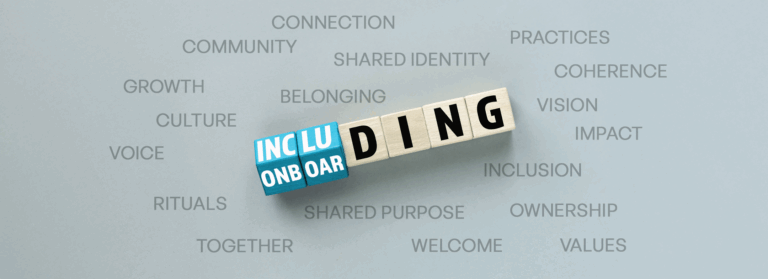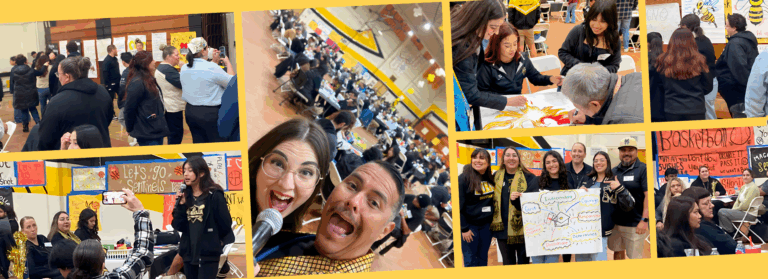Start Small, Stay Focused: Leading Schoolwide Implementation That Centers Students
When I started this work, I wasn’t looking for a program. I was looking for something that would truly meet the needs of our students. I took a hard look at where they were struggling and what was getting in the way of their success. At the same time, I was thinking about our staff. I knew that for anything to stick, it had to be something they could believe in and rally around together.
Getting to the Root Cause: A Simple Way to Uncover What’s Really Going On
When school teams face persistent challenges, it is easy to jump straight into solutions. But without a clear understanding of what is driving the problem, even well-intentioned efforts can end up treating symptoms instead of addressing the root cause. The interrelationship digraph is one protocol that supports deeper analysis by helping teams see how different contributing factors influence one another.
3-2-Q: A Practical Protocol for Reflection
Instructional teams are often short on time but high on urgency. In the middle of initiatives, data cycles, and daily demands, structured reflection can get lost. But without space to process what’s working and where support is needed, growth stalls.
Leading with Transparency: Closing the Feedback Loop with Purpose
Collecting feedback is a critical part of leading a responsive school—but it’s what happens after that matters most. When we ask for input, we set an expectation that voices will be heard and considered. Following through by clearly communicating what decisions were made—and how that feedback shaped them—strengthens trust, reinforces transparency, and models the kind of responsive leadership we want to see at every level of our system. Closing the feedback loop isn’t just good practice; it’s essential to building a culture where collaboration leads to meaningful action.
More Than a Welcome: Onboarding That Reinforces Who We Are
Onboarding isn’t just about handing out keys and explaining procedures. Done well, it’s a school’s first opportunity to immerse new team members in the why behind the work. It’s a chance to connect every role—every person—to a shared vision of student readiness, a shared purpose for learning, and a shared identity rooted in equity, community, and belonging.
Turn Data Into Direction: Using PIN Analysis to Guide Schoolwide Improvement
Data can tell powerful stories, but only when we take time to understand what it reveals. In schools, where leaders juggle student needs, district priorities, and policy demands, large volumes of data can quickly become overwhelming. This is where the PIN Analysis becomes a practical, time-saving tool.
Listening is Leadership: Elevating Student Voice to Transform School Culture
There are a lot of pressures facing school leaders right now: achievement data, staffing challenges, shifting priorities, etc. It’s easy to get caught in the day-to-day demands and feel like there’s no time to slow down. But one of the most powerful things we can do as leaders is pause and ask: Are we actually listening to our students?
Reimagining Safe Spaces: What School Leaders Can Learn from Scholastic Esports
Since 2022, Inflexion has partnered with the Network of Academic and Scholastic Esports Federations (NASEF) to explore this very question. Together, with support from the Department of Homeland Security, we’ve examined how scholastic esports can offer far more than entertainment. They can be a tool for STEM learning, belonging, social-emotional development, and even violence prevention.
How One Superintendent Built a Shared Identity from the Ground Up
When Dave Parker began his tenure as superintendent of Forest Grove School District, he didn’t have a blueprint. He had curiosity—and a desire to understand the community he’d just stepped into. At a chance meeting over coffee, he first heard about using identity‑based engagement to connect with students, staff, and families. The concept was new, but it resonated. Rather than rely solely on traditional strategic planning, he wanted to dig deeper—starting with questions instead of answers.
Making Evaluation Meaningful and Supportive
Conceptually, evaluation shapes careers and advancement. In reality, it rarely leads to significant outcomes. Few teachers receive unsatisfactory ratings, and tenured teachers are seldom dismissed—typically only when serious misconduct occurs. This is understandable. Evaluation is often vaguely written into policy and tightly limited by bargaining agreements designed to protect teachers from arbitrary or ill-informed judgments.
Challenging the Deficit Model: A Summary of Community Cultural Wealth
In our classrooms, strength and brilliance often show up in ways we’re not trained to recognize. Tara Yosso’s concept of community cultural wealth invites us to shift from a deficit lens to one that celebrates the rich array of knowledge, skills, and resilience students of color bring with them. This includes aspirational dreams nurtured across generations, the power of multilingual storytelling, deep family ties, strong social networks, and the navigational savvy it takes to succeed in systems full of barriers. When schools recognize and build on these strengths we both affirm identity and pave the way for educational equity.
Resource Roundup: The Hits of the Year
As this school year comes to a close, we’re taking a moment to celebrate the spirit of shared learning that defines our community. Throughout the year, many of you shared the tools, insights, and strategies that made a difference in your work and in the lives of your students. This roundup reflects the resources that resonated most—those you’ve recommended, passed along, and told us helped move your work forward. We hope you find fresh inspiration here, and we invite you to continue sharing your go-to resources as we look ahead to a new year of learning together.
Seeing Beyond the Numbers: Using Street Data to Transform Our Schools
Street data refers to the qualitative, human-centered insights gathered directly from those closest to the classroom experience—students, families, and educators. Unlike standardized metrics, street data is personal, context-rich, and equity-focused. It helps us surface what’s not showing up on our dashboards.
Envisioning What’s Possible: Using Innovation Configuration Maps to Define the Ideal
At Inflexion, we believe meaningful school transformation doesn’t come from top-down mandates or silver-bullet programs. It starts from within by helping educators make sense of their systems, find alignment, and take ownership of change. That’s where Innovation Configuration (IC) Maps come in.
A Vision Shared: How Anaheim Union High School District Redefined School Identity Through Community Collaboration
When I reflect on my time as Chief Academic Officer at Anaheim Union High School District (AUHSD), one of the initiatives I’m most proud of is our districtwide commitment to hosting Visioning Days—full-day, community-centered events at every school site designed to reimagine what school could and should be for every student.
Step Back to Move Forward: Engage in a Historical Scan
The Historical Scan is more than just a timeline—it’s an opportunity to identify your school’s Inflexion Points: those pivotal moments where reflection can turn into redirection, and where collective experience can inform a more intentional path forward.
Start Small When Thinking Big: Little Things Create Lasting Impact
One practical way to approach school improvement is by chunking your efforts into three categories: Little Things, Key Moves, and Big Plays. This simple framework can help you prioritize your energy, pace your work, and build momentum toward lasting change.
Navigating Hard Times: Tools and Resources to Help You
Finding support during difficult times can bring a sense of relief. Schools are more than places of learning—they are communities that provide stability and assistance in times of need. By offering guidance and access to helpful resources, educators help students, staff, and families navigate life’s toughest moments.
Crosswalking the Four Pillars of Community Schools and the Inflexion Approach Navigation Tool
Schools that leverage both the Four Pillars of the Community Schools Model and the Inflexion Navigation Tool will be better positioned to cultivate learning environments where every student thrives. By crosswalking these frameworks, schools can move beyond isolated initiatives and toward a cohesive, strategic approach that integrates community assets, supports holistic student development, and fosters sustainable change.
The Five Shifts: Helping School Leaders Think Differently, Act Boldly, and Embrace Transformation
To truly help schools thrive, leaders need to think differently, act boldly, and embrace transformation. That’s where these five critical shifts come in. They’re not about working harder; they’re about working smarter—breaking old habits, reimagining possibilities, and creating lasting change.
From Fixation to Flourishing: Centering Students With Specific Needs
Learn how a holistic vision of readiness supports students with disabilities through strength-based, inclusive practices.
Developing Maxims for Sherman County: A Model for Authentic Engagement
In the heart of Sherman County, a remarkable process is unfolding—one that not only brings the community together but also empowers students to shape the guiding principles of their schools. Led by Superintendent Julia Fall and facilitated with thoughtful support from staff, this community engagement initiative exemplifies how leadership, listening, and intentionality can pave the way for meaningful change.
The Community Schools Model: A Blueprint for Oregon
The Community Schools Model offers a transformative solution to the systemic challenges facing education. By addressing education inequities through four foundational pillars—Integrated Student Supports, Enhanced and Expanded Learning Time and Opportunities, Active Family and Community Partnership, and Collaborative Leadership and Practices—the model reimagines schools as equitable, inclusive, and holistic systems.
Manage Complex Change: Keeping Your Shared Vision for Readiness in Mind
Complex change in schools is both necessary and challenging. Drawing on Mary Lippitt’s Integrated Change Management Model, this resource explores actionable strategies for managing complex change effectively in schools.
























